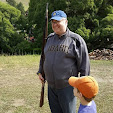My commission work is over for a while, and I am able to paint for myself again! Unfortunately, I will not longer be able to paint 10 hours a day, so I am going to try a few smaller projects.
Wednesday I started on two 24 figure regiments of Fife & Drum British line infantry. I decided to paint the 33rd Foot because they seemed to be everywhere during the war. Then I chose the 35th Foot for their cool orange facings. Flags are on their way from GMB.
I enjoyed my last foray into Fife & Drum's range, but I felt like my usual techniques were not drawing out the fine detail that the figures offered. Richard Ansell has sculpted what are, in essence, military miniatures, rather than traditional wargames figures.
I wondered if I could apply some techniques that I use in painting 1:35 scale figures to these smaller figures. Usually I paint my 1:35 faces all in oils. In fact, I lean heavily on oil paints to bring out the details in those figures. I had tried my wood grain technique on 28mm musket stocks with good success. I resolved to try oil washes on flesh and trousers on these figures.
I began by painting the flesh AND WOOD bits with Delta's "Medium Flesh."
The figures look rough here, but the oil paint will bring that detail back.
Burnt Umber, Lamp Black, and Titanium White are three oil colors that I use more than the rest combined. I bought this tube of Burnt Umber for about $10 back in 1997. I have used about 1/4 of it over the past 16 years. I like Mona Lisa thinner because it is very mild, never stripping or crazing the primer or the acrylic undercoat.
I started by painting the woods with only moderately diluted Burnt Umber. Then with a wet brush, I made long strokes through the wet oil paint, creating streaks that look like wood grain.
After this first application had dried (about two hours), I applied a thin wash of Burnt Umber on all the flesh.
The wood is done, and I would not touch it again. After letting the flesh wash dry overnight, I applied a highlight of Delta's Medium Flesh. The technique I use for 1:35 figures relies on oils from start to finish, but it also requires much more drying time. For these smaller figures, a mix of oils and acrylics worked well.
After blocking in the trousers (and the 33rd's drummer's coat) with flat white, I applied a dark gray wash, then highlighted in white acrylic paint.
I also gave the tops of the drums a burnt umber wash.
After that, I just painted the figures as I normally do. Once the figures were dry, I prepared to seal them.
Oils are not as durable as acrylics. They will rub off in handing, which is why, I imagine, most wargamers are so wary of oil paints. To keep this from happening, I sealed the figures in two steps. I started by airbrushing some clear acrylic varnish. Once it was dry, I sprayed the figures with Testor's Dullcote, an enamel lacquer.
The results of my foray into oils were everything I hoped. The fine detail on faces is much crisper, and the various folds in the trousers really jump out. The musket barrels, flag poles, and drumsticks all look like real wood. The figures are not perfect, but they will look great on the wargame table. They may even compete in a figure modeling competition.
As you look through the pictures, please remember that the actual height of the figures is under 30mm. The flaws that you see in magnification are not as visible in real life.
Drummers and Colonels
Standard Bearers
35th Foot Drummer
33rd Foot Drummer
Drummers from the Back
35th Foot Colonel
33rd Foot Colonel
Officers from the Back
33rd Foot Standard Bearer
35th Foot Standard Bearer
I doubt I could ever paint figures like this for commission. The technique takes a lot of time, and it may not add enough to make more money. I would have to charge $30 or $40 a figure to make it cost effective. But for my own satisfaction, this technique works. We'll see how I feel after painting all 48 figures in these two regiments, but I may try this on some other ranges.



































your speed of work still puts me to shame. And your results stand alone, hats off to you
ReplyDeletePeace James
Very nice they are too.
ReplyDeleteBreathtaking - honestly!
ReplyDeleteI'll try to steal this technique from you, and I only hope it looks half as good as yours!
The wood looks fantastic, but to be honest, I am not sure the overall effect is better than your usual style. I feel like your original style is just such a perfect toy soldier look... And the colors look dramatic and distinct and yet subtle.
ReplyDeleteI know. I'm not sure it is worth the extra work. I'll decide for sure once the whole units are done.
ReplyDeleteLooking very good, love the drummers especially!
ReplyDeleteReally love this oil technique and will probably do the same with the samples I got from Jim. I notice you still do the black undercoat. Am guessing you still find this necessary even though you are doing washes?
ReplyDeleteI have read you can use a cheap crock pot to speed up the drying to a couple of hours if desired. I know you paint in large units and this may not be necessary but I feel a little speed up in drying can be a good thing. If nothing else, the paint will have "cured" more by the next step. I picked up this hint from a Mid-Westerner that talked about painters of 20 or 30 years ago that used oils to great effect. My understanding is that horses especially benefit from the oil technique?
Chris
San Antonio, tX